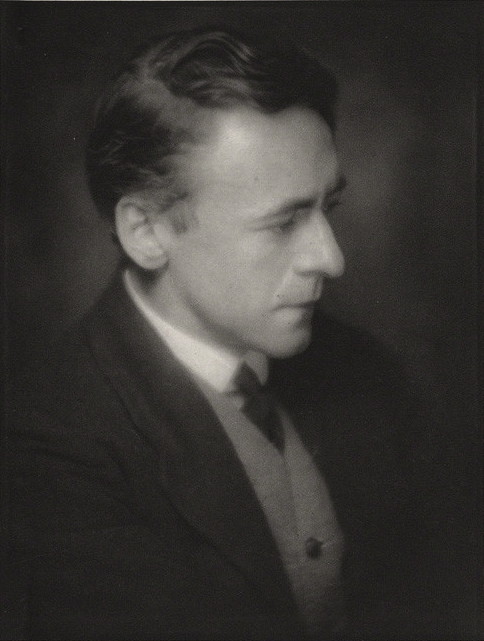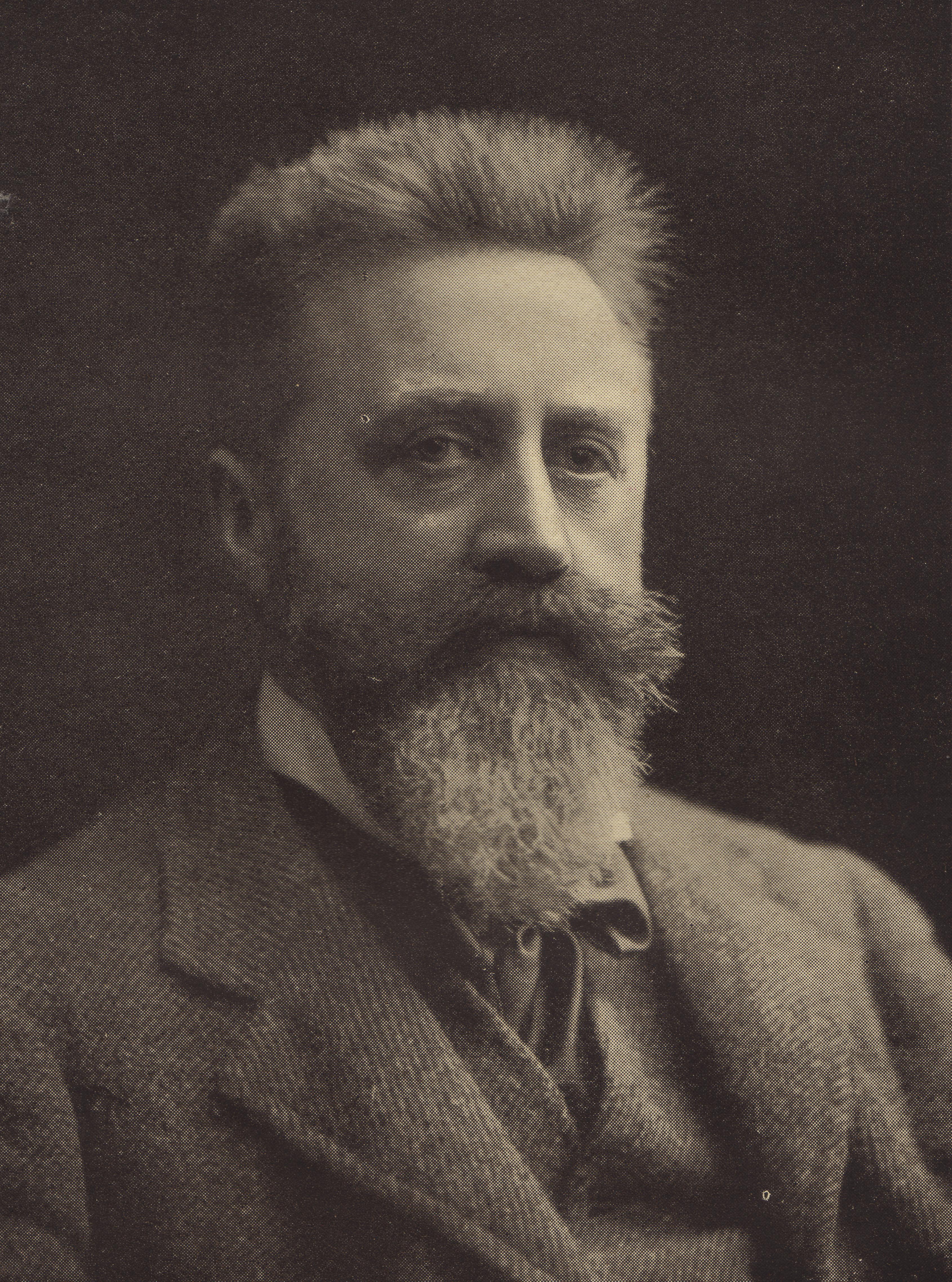|
The Blessed Damozel
"The Blessed Damozel" is perhaps the best known poem by Dante Gabriel Rossetti, as well as the title of his painting (and its replica) illustrating the subject. The poem was first published in 1850 in the Pre-Raphaelite journal '' The Germ''. Rossetti subsequently revised the poem twice and republished it in 1856, 1870 and 1873. Poem The poem was partially inspired by Edgar Allan Poe's poem "The Raven", with its depiction of a lover grieving on Earth over the death of his loved one. Rossetti chose to represent the situation in reverse. The poem describes the damozel observing her lover from heaven, and her unfulfilled yearning for their reunion in heaven. The first four stanzas of the poem are inscribed on the frame of the painting: Paintings ''The Blessed Damozel'' is the only one of Rossetti's paired pictures and poems in which the poem was completed first. Friends and patrons repeatedly urged Rossetti to illustrate his most famous poem,Treuherz et al. (2003), p. 100 and ... [...More Info...] [...Related Items...] OR: [Wikipedia] [Google] [Baidu] |
Dante Gabriel Rossetti
Gabriel Charles Dante Rossetti (12 May 1828 – 9 April 1882), generally known as Dante Gabriel Rossetti (), was an English poet, illustrator, painter, translator and member of the Rossetti family. He founded the Pre-Raphaelite Brotherhood in 1848 with William Holman Hunt and John Everett Millais. Rossetti inspired the next generation of artists and writers, William Morris and Edward Burne-Jones in particular. His work also influenced the European Symbolists and was a major precursor of the Aesthetic movement. Rossetti's art was characterised by its sensuality and its medieval revivalism. His early poetry was influenced by John Keats and William Blake. His later poetry was characterised by the complex interlinking of thought and feeling, especially in his sonnet sequence, ''The House of Life''. Poetry and image are closely entwined in Rossetti's work. He frequently wrote sonnets to accompany his pictures, spanning from '' The Girlhood of Mary Virgin'' (1849) and ''Astarte ... [...More Info...] [...Related Items...] OR: [Wikipedia] [Google] [Baidu] |
Lady Lilith
''Lady Lilith'' is an oil painting by Dante Gabriel Rossetti first painted in 1866–1868 using his mistress Fanny Cornforth as the model, then altered in 1872–73 to show the face of Alexa Wilding. The subject is Lilith, who was, according to ancient Judaic myth, "the first wife of Adam" and is associated with the seduction of men and the murder of children. She is shown as a "powerful and evil temptress" and as "an iconic, Amazon-like female with long, flowing hair."Delaware Art Museum, ''Lady Lilith Rossetti overpainted Cornforth's face, perhaps at the suggestion of his client, shipping magnate , who displayed the painting in ... [...More Info...] [...Related Items...] OR: [Wikipedia] [Google] [Baidu] |
List Of Paintings By Dante Gabriel Rossetti
This is a list of paintings by the British Pre-Raphaelite artist Dante Gabriel Rossetti Gabriel Charles Dante Rossetti (12 May 1828 – 9 April 1882), generally known as Dante Gabriel Rossetti (), was an English poet, illustrator, painter, translator and member of the Rossetti family. He founded the Pre-Raphaelite Brotherhoo .... Most painting details are referenced from the Rossetti Archive, with some additional paintings researched from The Walker Art Gallery. 1840s 1850s 1860s 1870s 1880s Notes {{Lists of paintings Rosetti ... [...More Info...] [...Related Items...] OR: [Wikipedia] [Google] [Baidu] |
Madcap's Flaming Duty
''Madcap's Flaming Duty'' is the ninety-eighth release and twenty-seventh major studio album by Tangerine Dream. Along with ''Cyclone'' (1978) and '' Tyger'' (1987) it is one of the few Tangerine Dream releases to feature vocals. The album is a tribute to Syd Barrett who died in 2006; the title references Barrett's album ''The Madcap Laughs''. This is the first album to feature Bernhard Beibl who would remain a member until 2014. Track listing Personnel Tangerine Dream * Edgar Froese – keyboards, guitars, drum programming, harmonica * Thorsten Quaeschning – keyboards, drum programming, vocals * Linda Spa – flute * Iris Camaa – percussion * Bernhard Beibl – guitars, violin, mandolin Additional musicians * Chris Hausl – vocals * Gynt Beator – Irish bouzouki * Thomas Beator – Irish bouzouki The Irish bouzouki () is an adaptation of the Greek bouzouki (Greek: μπουζούκι). The newer Greek ''tetrachordo'' bouzouki (4 courses of strings) was introd ... [...More Info...] [...Related Items...] OR: [Wikipedia] [Google] [Baidu] |
Tangerine Dream
Tangerine Dream is a German electronic music band founded in 1967 by Edgar Froese. The group has seen many personnel changes over the years, with Froese having been the only constant member until his death in January 2015. The best-known lineup of the group was its mid-1970s trio of Froese, Christopher Franke, and Peter Baumann. In 1979, Johannes Schmoelling replaced Baumann. Since Froese's death in 2015, the group has been under the leadership of Thorsten Quaeschning (Froese's chosen successor and the current longest-serving band member, having joined in 2005). He was joined by violinist Hoshiko Yamane in 2011, Ulrich Schnauss in 2014 and Paul Frick in 2020. Tangerine Dream are considered a pioneering act in electronica. Their work with the electronic music Ohr label produced albums that had a pivotal role in the development of the German musical scene known as kosmische Musik ("cosmic music"). Their "Virgin Years", so called because of their association with Virgin Recor ... [...More Info...] [...Related Items...] OR: [Wikipedia] [Google] [Baidu] |
La Damoiselle élue
''La Damoiselle élue'' (''The Blessed Damozel''), List of compositions by Claude Debussy by Lesure number, L. 62, is a cantata for soprano soloist, 2-part children's choir, 2-part female (contralto) choir (with contralto solo), and orchestra, composed by Claude Debussy in 1887–1888 based on a text by Dante Gabriel Rossetti. It premiered in Paris in 1893. History Claude Debussy was interested in the Symbolism (arts), symbolist movement and later took inspiration from a poem by Stéphane Mallarmé for his ''Prélude à l'après-midi d'un faune'' (1894). Reading an anthology of English poetry translated by Gabriel Sarrazin, "Poètes modernes d’Angleterre" (1883) gave Debussy the idea of composing a cantata on the poem "The Blessed Damozel" (1850) by Pre-Raphaelite Brotherhood, Pre-Raphaelite poet and painter Dante Gabriel Rossetti.Caroline RaeLa Damoiselle élue, Claude Debussy website of the London Philharmonic Orchestra, accessdate 13 June 2016. Debussy had probably not seen ... [...More Info...] [...Related Items...] OR: [Wikipedia] [Google] [Baidu] |
Julius Harrison
Julius Allan Greenway Harrison (26 March 1885 – 5 April 1963) was an English composer and conductor who was particularly known for his interpretation of operatic works. Born in Lower Mitton, Stourport in Worcestershire, by the age of 16 he was already an established musician. His career included a directorship of opera at the Royal Academy of Music where he was a professor of composition, a position as répétiteur at the Royal Opera House, Covent Garden, conductor for the British National Opera Company, military service as an officer in the Royal Flying Corps, and founder member and vice-president of the Elgar Society. Life and career Early years Harrison was born in 1885 in Lower Mitton, Stourport in Worcestershire. He was the eldest of four sons and three daughters of Walter Henry Harrison a grocer and candle maker from the village of Powick near Malvern, and his wife, Henriette Julien ''née'' Schoeller, a German-born former governess. He was educated at a dame ... [...More Info...] [...Related Items...] OR: [Wikipedia] [Google] [Baidu] |
Benjamin Burrows
Dr Benjamin Burrows (20 October 1891 – 28 January 1966 in Leicester, England) was an English organist, pianist, music teacher, inventor, composer of art songs and instrumental music.Unknown author, ''The Oxford Dictionary of Music'' online He was known as a modest man and one of the finest teachers of his times. Biography Burrows was born in Leicester, England. He was the son of Benjamin Harper Burrows (1864-1915), a scholar and teacher of some repute, who played violin, viola and later cello, and was closely involved with the Leicester Orchestral Union from 1884 until his death. His mother was Mary Elizabeth (born Gray 1867) who was an excellent pianist. His sister was violinist, teacher and orchestra conductor Grace Burrows. He was born at 12 College Street, Leicester and attended Alderman Newton's Boys School. He showed such a marked aptitude for science that he moved to a school specialising in this. Later he was tutored privately which was felt necessary due to a serio ... [...More Info...] [...Related Items...] OR: [Wikipedia] [Google] [Baidu] |
Arnold Bax
Sir Arnold Edward Trevor Bax, (8 November 1883 – 3 October 1953) was an English composer, poet, and author. His prolific output includes songs, choral music, chamber pieces, and solo piano works, but he is best known for his orchestral music. In addition to a series of symphonic poems, he wrote seven symphonies and was for a time widely regarded as the leading British symphonist. Bax was born in the London suburb of Streatham to a prosperous family. He was encouraged by his parents to pursue a career in music, and his private income enabled him to follow his own path as a composer without regard for fashion or orthodoxy. Consequently, he came to be regarded in musical circles as an important but isolated figure. While still a student at the Royal Academy of Music Bax became fascinated with Ireland and Celtic culture, which became a strong influence on his early development. In the years before the First World War he lived in Ireland and became a member of Dublin literary ... [...More Info...] [...Related Items...] OR: [Wikipedia] [Google] [Baidu] |
Ernest Farrar
Ernest Bristow Farrar (7 July 1885 – 18 September 1918) was an English composer, pianist and organist. Life Ernest Farrar was born in Lewisham, London, but moved in 1887 to Micklefield in Yorkshire, where his father was a clergyman. The rest of his life was very much centred in the north of England. He was educated at Leeds Grammar School, where he began organ studies. His studies at Durham University did not progress beyond his matriculation. In May 1905 he won a scholarship to the Royal College of Music. There he studied with Sir Charles Villiers Stanford and Sir Walter Parratt and began friendships with Frank Bridge and Geoffrey Molyneux Palmer. He also took up several posts as organist in All Saints' Dresden, St Hilda's, South Shields and Christ Church, High Harrogate. At Harrogate, he worked closely with local conductor Julian Clifford and took on the 14-year-old Gerald Finzi as a composition pupil. In 1913, he married Olive Mason in South Shields. His best man at th ... [...More Info...] [...Related Items...] OR: [Wikipedia] [Google] [Baidu] |
Edgar Bainton
Edgar Leslie Bainton (14 February 18808 December 1956) was a British-born, latterly Australian-resident composer. He is remembered today mainly for his liturgical anthem ''And I saw a new heaven'', a popular work in the repertoire of Anglican church music, but during recent years Bainton's other musical works, neglected for decades, have been increasingly often heard on CD. Early life and career Bainton was born in Hackney, London, the son of George Bainton, a Congregational minister, and his wife, Mary, née Cave. Bainton later moved with his family to Coventry and he showed early signs of musical ability playing the piano; he was nine years old when he made his first public appearance as solo pianist. He was awarded a music scholarship to King Henry VIII Grammar School in Coventry in 1891, and in 1896 he won an open scholarship to the Royal College of Music to study theory with Walford Davies. In 1899 he received a scholarship to study composition with Sir Charles Villiers St ... [...More Info...] [...Related Items...] OR: [Wikipedia] [Google] [Baidu] |
Granville Bantock
Sir Granville Ransome Bantock (7 August 186816 October 1946) was a British composer of classical music. Biography Granville Ransome Bantock was born in London. His father was an eminent Scottish surgeon.Hadden, J. Cuthbert, 1913, ''Modern Musicians'', Boston: Le Roy Phillips; London & Edinburgh: T. N. Foulis, pp.42–46 His younger brother was the dramatist and film director Leedham Bantock. Granville Bantock was intended by his parents for the Indian Civil ServiceAnderson, Keith (2001)''Granville Bantock (1868–1946): Old English Suite; Russian Scenes; Hebridean Symphony (sleevenotes)'' Naxos. Retrieved 16 July 2011. but he suffered poor health and initially turned to chemical engineering. At the age of 20, when he began studying composers' manuscripts, at South Kensington Museum Library, he was drawn into the musical world. His first teacher was Dr Gordon Saunders at Trinity College of Music. In 1888, he entered the Royal Academy of Music where he studied harmony and compos ... [...More Info...] [...Related Items...] OR: [Wikipedia] [Google] [Baidu] |








